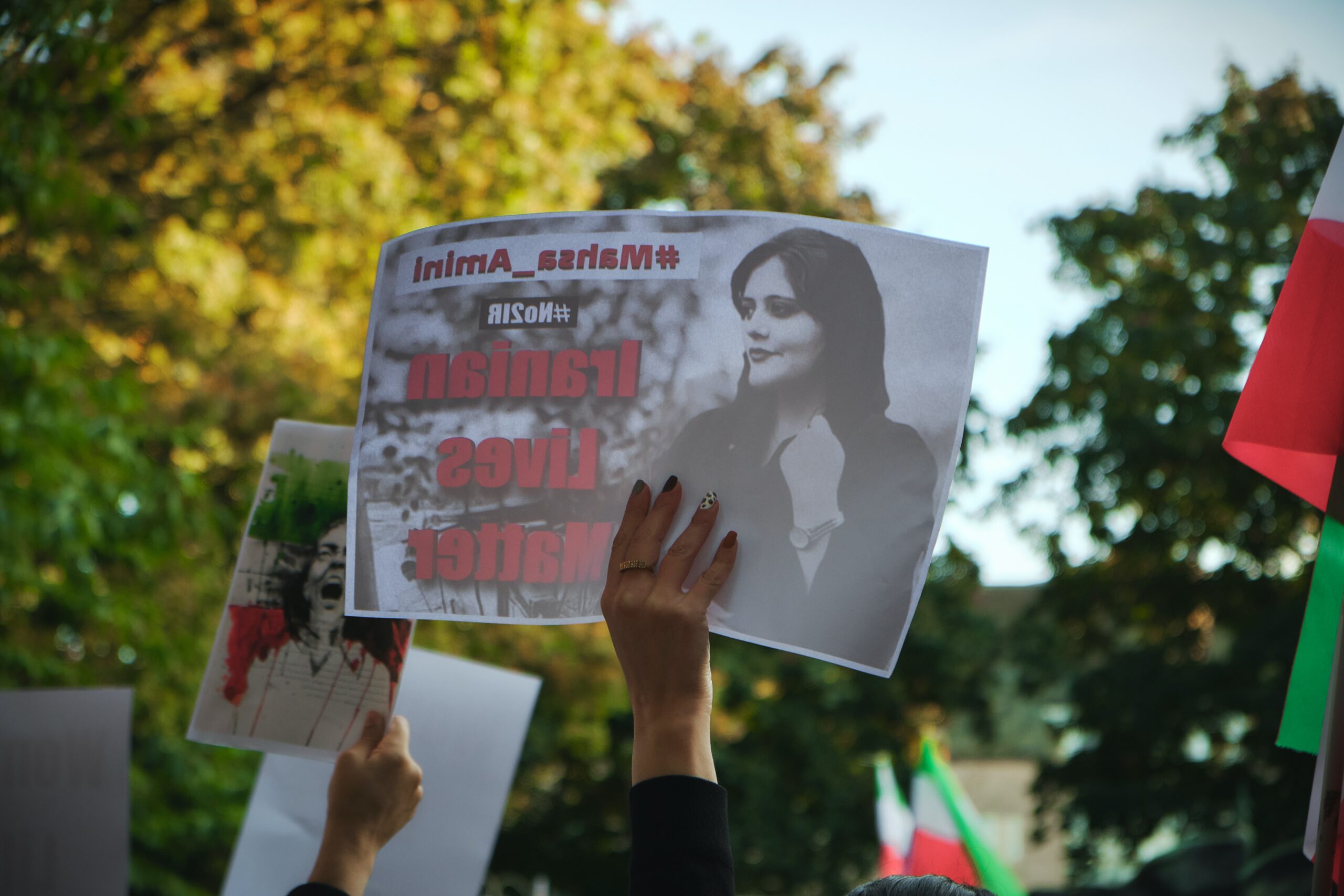“Women can’t go to the stadium. We are not allowed to ride a bike. We are not allowed to ride a motorcycle. We are not allowed to sing and become a singer. We are not allowed to go dancing classes. We don’t want limitations in our lives. We don’t want to be who we don’t want to be. We want to be free. We want women to have the same rights as men.”
This is what a 40-year-old Iranian woman, who for security reasons wants to remain anonymous, tells me when I ask her about the situation in Iran. It is mid-October when I talk to her, the protests calling for equal rights and justice in Iran continue despite repression. She moved to London recently to pursue her studies, but when she heard about the news, she didn’t hesitate to join the campaign and voice out her story.
On 16 September 2022, a 22-year-old Iranian woman named Mahsa Amini died after being arrested by the Iranian morality police for not wearing a hijab in accordance with the state rules. The authorities claimed that she died of a heart attack and health conditions. However, it has been alleged that she was tortured by the police and fell into a coma. Medical evidence has also pointed out that she died of brain trauma or cerebral hemorrhage.
After her death, millions of people in Iran and worldwide have joined a series of demonstrations calling for freedom, equal rights, and justice for women. On October 1, protests under the slogan “Women, Life, and Liberty” were held worldwide in major cities. “It’s a phenomenal occurrence that we’re witnessing in the sense that there is no political figure and there is no political agenda to this movement. It is simply people rising and seeking their rights,” said Dr. Tahirih Danesh, Socioeconomic Rights Expert and Lecturer at the University of Roehampton.
Meanwhile, the state authorities have allegedly used excessive force and violence against peaceful protesters. According to the Iranian Human Rights Activists News Agency (HRANA), as of November 5th at least 300 people have been killed, including 47 children, while more than 14,000 people have been detained, including journalists, human rights activists, and artists.
Despite the lethal crackdown, protests continue. In London, Iranian expats stand in solidarity with protesters and take all steps they can, from signing the petition, and joining campaigns and gatherings, to voicing out their stories. “That’s what I can do. If there’s anything I can do, I would. I feel that I am in a safe country, but they are fighting for me. So, I wanted to do something. This is the least I can do,” the 40-year-old woman told me.
After the 1979 Revolution, hijab or headscarf became mandatory. Thousands of women took to the street to protest against the government’s compulsory hijab law. “The very first major form of objection to this enforcement was the March of Iranian women on 8th of March 1979 when Iranians, particularly women of all backgrounds, came together and said we disagree with mandatory hijab laws,” said Dr. Tahirih Danesh.
“In fact, women poured out onto the streets at the start of the revolution when it was announced that the hijab law would become mandatory. So, there was a lot of protesting, but it did die down… Although, there have always been acts of defiance and public disobedience to these ridiculous rules,” Nika Hazini, a human rights advocate, told Utblick Magazine.
Over the past decades, the Iranian government has introduced more legislative measures to enforce mandatory hijab laws. The laws are strictly enforced by the morality police who are in charge of monitoring the dress code and arresting women who violate the laws. “If I don’t wear a headscarf, they could arrest me or put me in prison. They (the morality police) will ask me to sign a paper and (pledge) that I won’t do it again. It’s a threat. The feeling that they are humiliating you because of your clothes,” the 40-year-old Iranian woman said.
But the current movement is much more than clothing or bodily rights. Women and girls in Iran, together with men and boys, have come together to demand freedom, justice, and equal rights. “It is about getting equality for men and women within Iran. Women’s rights in Iran are negligible,” added Nika Hazini.
The struggle for equal rights continues. But change is here. Iranian women are leading the revolution and they won’t back down.
As the 40-year-old woman put it, “We won’t go back because we have lost a lot. If we go back, we will be in a worse situation than in the past. The only way we have is to keep going at any cost”.



